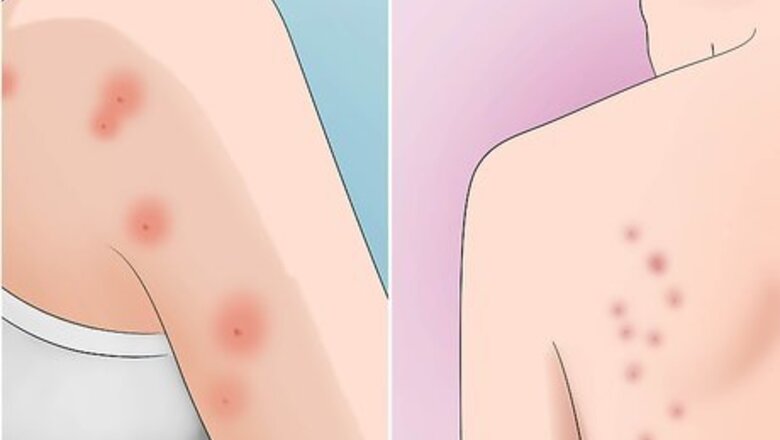
views
Stopping Bug Bites at Home
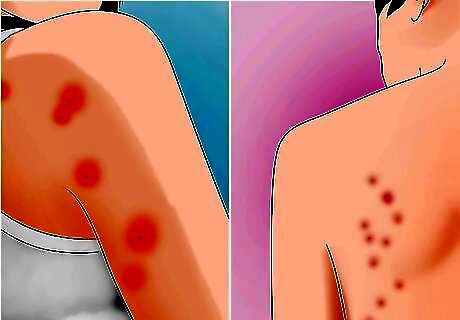
Determine what's biting you. You will be able to prevent future bites if you know what sort of bugs you're dealing with. Bed bug bites, most common around the home, are large, splotchy, red bites. If you've ever been bitten by a mosquito, bed bug bites look very similar. Flea bites will be smaller red bites. They often appear around the ankles or lower legs. If you have pets, get them checked for fleas. You can pick up a flea medication at your local veterinarian office. Bites from lice will appear in your hair. You may not be able to see them, so have a friend or family member check for you. They are red and itchy. These bites can also appear in other areas which have body hair. You don't want to mistake other irritants for bug bites. Allergies cause similar redness and swelling, as do toxic chemicals such as pesticides or solvents. Emotional stress and anxiety can also cause similar breakouts.
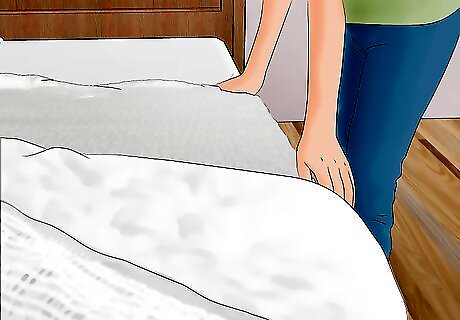
Change your sheets. To prevent insects from getting into bed and biting you at night, wash and change your sheets often. Your dead skin cells will fill your bed, and these cells will attract insects. Washing your sheets every other week isn't terrible, but a weekly cleaning is ideal. Even if you cannot see the bugs in your bed, they can definitely be present. Tiny microscopic bugs called dust mites may be biting you at night. These bugs are attracted to the dead skin cells that stick to dirty sheets. Use hot, soapy water to get a deep clean on your sheets. Make sure that you let them dry completely in the dryer. Moist sheets can collect mold. If you've washed your sheets and you're still finding bites or insects in your bed, buy new sheets. It's a bit of an investment, but you'll be thankful in the long haul. Try moving your bed frame away from the wall. Even a few inches of space can be helpful. You'll reduce the ability for bugs to move between the wall and your bed.
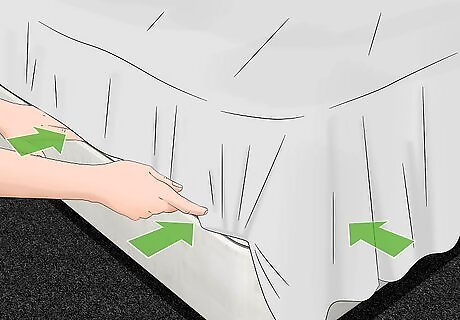
Tuck your sheets between the mattress and the box spring. Most bugs will scurry into any opening in a bed that you leave for them. It's best, therefore, to eliminate any area that they could nest in. Don't let your sheets drape onto the ground. Remember that bed bugs cannot fly or jump. You can take advantage of their fairly limited mobility by tucking your sheets in. If you have dust mites, however, you actually don't want to make your bed. If you leave your bed unmade, you'll remove moisture from your sheets and mattress. Eventually, the mites will dehydrate and die. Dust mites need humidity to survive, so any dry environment will kill them.
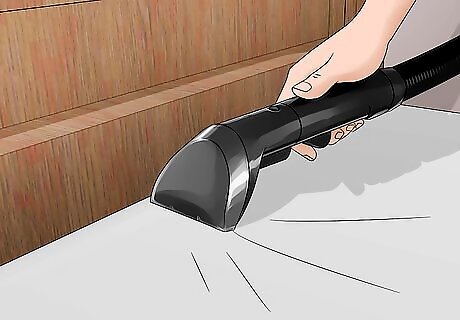
Vacuum thoroughly and regularly. It isn't enough just eradicate bugs from your bed itself. You'll need to use a vacuum to kill any remaining bugs. You also want to pick up scrap particles from your carpet. Any extra detritus will attract bugs into your area. Vacuum often to ensure that your carpet will be free of creatures in the future. Get an attachment for the vacuum to access hard to reach places. This could include the space behind your headboard or along the tack strips at the edge of your carpet. Be sure to move your bed from its usual location. You need to clean the entirety of your carpeted floor. If you don't have carpet, you can use a mop with soap and water to clean the area around your bed.
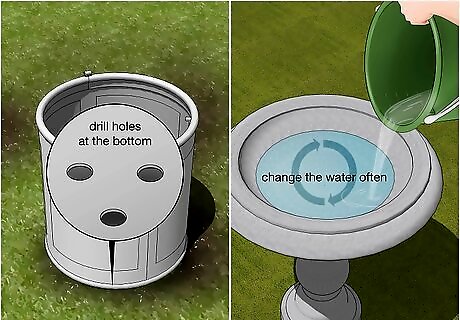
Eliminate standing water from your home. Even if you don't have a pool or another body of water near your house, you may still be attracting bugs to your property. Mosquitos lay eggs their eggs near sources of water, so they will take advantage of any liquid that could be out in your home. Drill holes in open containers, such as trash cans, that may be collecting water in them. Change birdbaths and pets' water bowls as often as you can. These are breeding grounds for mosquitos to be laying eggs. Don't leave pots, pans, or full glasses of water out.
Taking Larger Preventative Measures at Home

Have your blankets and comforters professionally cleaned. Taking these larger items to your local dry cleaners for a full cleaning or treatment can prevent future infestations. Inform them of your concerns. Many cleaners will have processes and relatively safe chemicals to discourage bugs from nesting in the fabric. For more severe cases of insect infestation, call a professional cleaning service to come to your home and eliminate the bugs. Don't take this step unless you're confident that you have bugs living in your bed, however, as it can be quite expensive. You can invest in a mattress encasement that is designed to fend off bed bugs. This encasement wraps around the entirety of your mattress and contains infestations. Any bugs trapped within the encasement will die off.
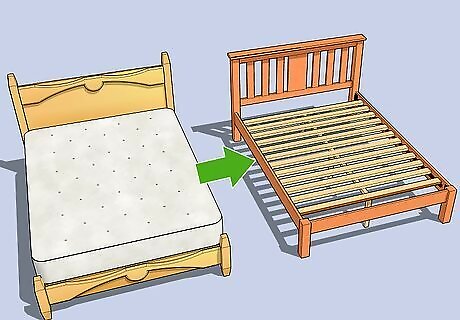
Switch out your bed frame. You may not have to worry about this preventative measure unless you're suffering from a bad case of bites. Bugs often hide within wooden frames, so changing to a metal frame may eliminate them from your bedroom. Wooden frames also sit closer to the floor, giving bugs easy access to traveling from the floor into your bed. You also want to avoid a bed with a headboard, if you can. Headboards are breeding grounds for insects, and they'll be able to easily slip through the porous wood and into your sheets. If you need a headboard to sleep, try using a metal one instead.
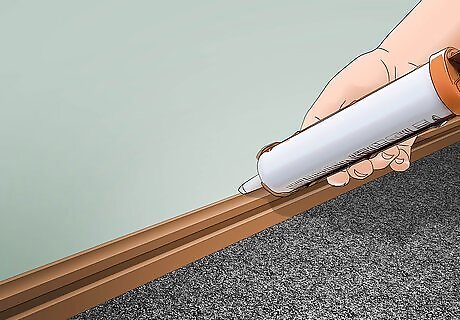
Seal your home well. If you can stop bugs from entering your home, you'll prevent them from biting you at night. You also will avoid paying exorbitant prices for new furniture or professional cleaning. Close cracks and crevices near bare plumbing or wiring. Smaller bugs can travel easily through these narrow paths. Get quality silicone or acrylic latex caulk to fill smaller holes around doors or windows. If your hole is any larger, you may need a sturdier filling, such as sheetrock or mortar. Because the insects biting you are likely very small, mesh screens on your doors and windows probably won't do much. Keep these openings closed when you can. Improving your general sanitation can help your bug problem. Don't leave dishes sitting out overnight and always clean up any spilled food crumbs.
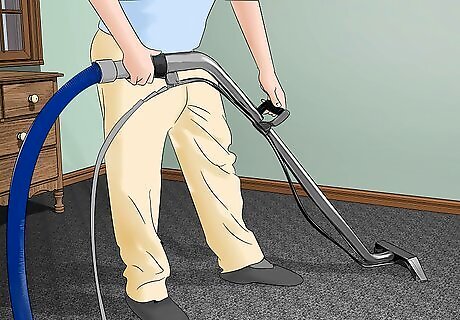
Seek help with a professional exterminator. If you're having trouble permanently eradicating your bug problem, you may want to call a specialist. Professional pest control companies generally use a mixture of steam treatment and insecticide. Starting with a steam treatment works best; your insecticides will kill any bugs that the steam misses. Make sure that your professional is using an insecticide with d-phenothrin as its active ingredient. D-phenothrin's major use is in the killing of small nuisance insects, such as bed bugs and ticks. It's more than likely that these sorts of creatures are the problem. If you don't want to pay for an exterminator, you can try doing a steam treatment yourself. You'll have to purchase your own cleaner. Make sure that it produces a low vapor, high-temperature steam. Stand as close to the bugs as you can. Move at a rate close to one inch per 10 seconds. Anything quicker than this might become nonlethal for your pests.
Preventing Bites in the Wild

Find a camping site in a bug-free area. Figure out where insects traditionally gather. You may be able to avoid dealing with them while you're in the great outdoors. While bugs can be present anywhere, they generally surround bodies of stagnant water. When camping in warm, moist climates, you'll definitely want to avoid still pools and lakes. A campsite on higher ground is advisable when searching for a spot. Pitching your tent on a hillside is advisable. Avoiding low, flat areas will distance you from any large stagnant bodies of water. Stick to higher ground, even if your area is fairly dry. Any rainfall, even if it is minimal, will attract more bugs to your area.
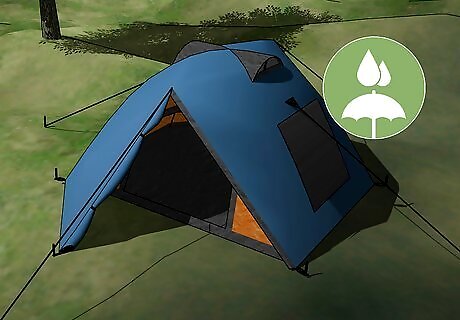
Invest in a waterproof tent. When using a traditional tent without as much protection from the elements, bugs can fly into your shelter with a bit more ease. A waterproof tent, while more expensive, does a great job keeping bugs out. This will eliminate the number of bites that you will get while sleeping. Waterproof tents, while thicker, have more breathability than a traditional tent. This means you won't notice the larger area of protection that surrounds them. Fresh air will flow in and out easily.
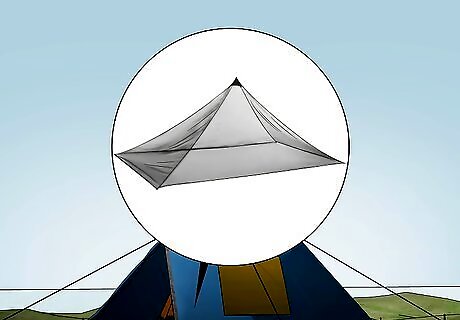
Buy mosquito netting. In addition to a waterproof tent, you may want to invest in preventative bug netting. These netting systems are great for protecting against bug bites during the day. These will fit nicely around a hammock. You'll be able to rest easily while napping. You can try a free-standing mosquito net. They are basically small tents, held together by metal or plastic frames that can be easily put away. You fit them nicely into a larger tent so that once you zip up the outside of the primary tent, you won't let bugs in. If you aren't camping with a tent, you can use a wedge mosquito net. The net hangs from two suspension points, draping over the sleeping bag or cot that you've brought to the outdoors. This brand of net is easy to set up and quite inexpensive.
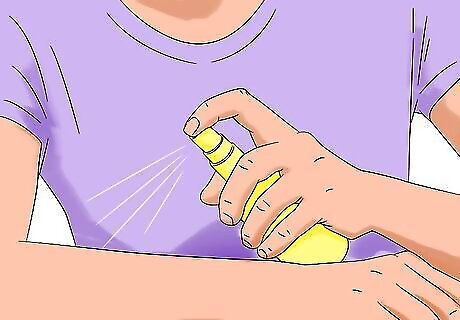
Apply a bug repellent before you sleep. Be sure that you're using a product that's safe for your skin, as certain repellents are made for the air. Choosing products with the active ingredients DEET or picaridin are often the most successful. You need to be cautious before using any bug spray. Do not spray in an enclosed area, such as your tent. Only apply to exposed skin; you don't want to spray underneath your clothing. If you want to apply bug spray to your face, spray into your hands first, and then rub the spray onto your face. Spraying directly into your eyes is a bad idea. Always check the label of your repellent before using it on your skin. Using the wrong product can be extremely toxic and dangerous. Explore more natural ways of keeping insects away by creating a natural bug repellent. From lemon eucalyptus oil to vanilla extract, you can use a wide range of easily accessible products and create simple concoctions. It may take you a little while to perfect these recipes. Remember that it's a good way to avoid releasing toxic chemicals into the atmosphere.

Burn sage. Toss a stick of sage onto your campfire just before you go to bed to ward bugs away. Most people find the smell soothing, and it's a good way to avoid spraying chemicals around your campsite area. You can throw fresh or dried sage onto the fire. Hang them in a cool, dry area for a week to let them dry fully. Dried sage can also be used to kindle your fire. Other herbs, such as lavender and mint, can also be used for similar results.
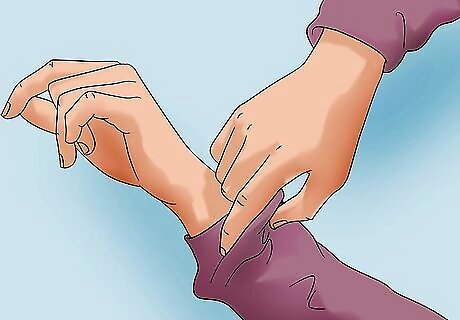
Cover up your body. Don't allow your skin to show while out in the woods. This invites bites from a large number of bugs.Mosquitos, in particular, will feed upon supple flesh. While the heat may sway you from layering up, you'll be thankful when you aren't scratching at any painful bites. Make sure that you're wearing long pants while you sleep, as well as socks. Pull your socks over your pants, so bugs can't get into the legs of your pajamas. You'll also want to wear long sleeves, and you should tuck your long sleeve shirt into your waist. All of your sleeping gear should be tight around the ankles, wrists, and your collar. It may be impossible to completely block off your hands and your neck area, but you'll be covering as much skin as you can. Treat your clothing with permethrin, a great bug repellent for killing unwanted insects.











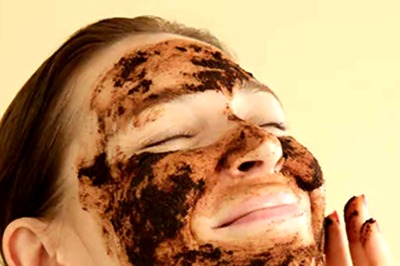





Comments
0 comment